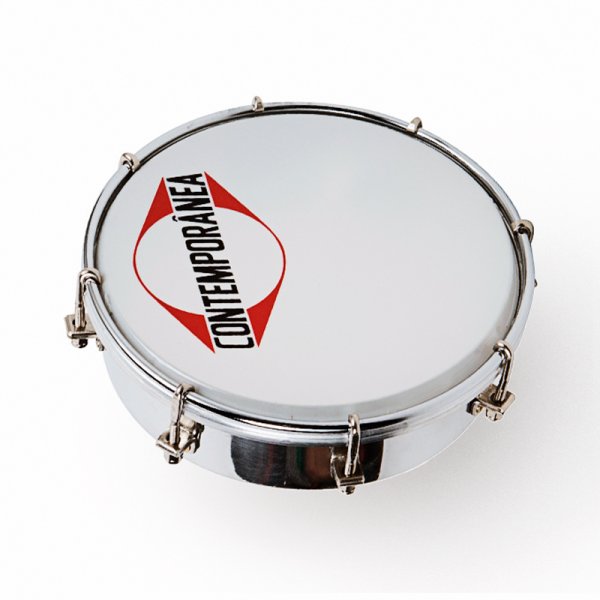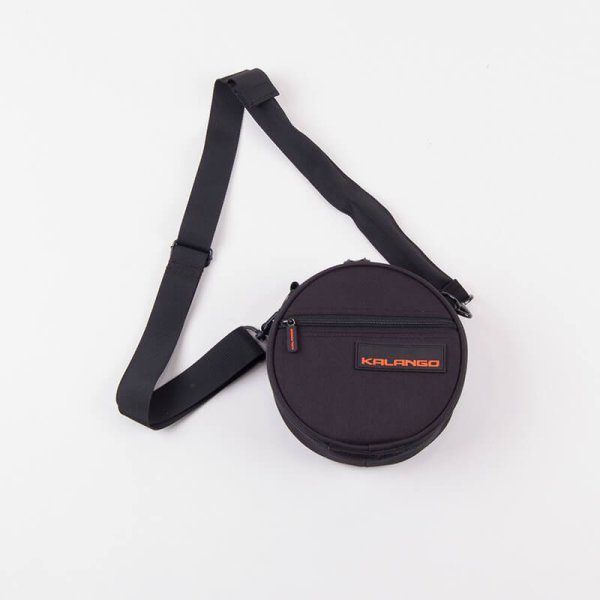The ultimate pro stick for the 3-1 technique: handmade 3-strand tamborim beater by Luciano Japa
Ok, really? Another Tamborim Beater to choose from? That's right - and we'll tell you why we absolutely wanted to have this model for you in our shop and what's so special about it. First of all, we are of course always super-curious about the trends that reach us from Brazil and new ideas, especially when they come from professional sambistas who develop such products directly from their practical experience. And this is also where our first sympathy point goes - the beater has been developed by a professional player, tested and found to be good through use in Rio's highest Samba leagues. That's already a very good reference. We'll take a closer look at Japa's tamborim beater and show you what the concept is throughout its design.
Tamborim beater for advanced players, but also beginners who are serious about learning good tamborim technique
At 39cm, the stick is intentionally long, quite a bit longer than the beaters with 7 pins we know from the 2-1 technique. And what immediately catches the eye is the strange proportions: the handle is longer than the strands that stick out at the front. Unlike shorter all-rounder sticks or 2-1 beaters, Japa's beater is really stiff. Let's take a closer look at this design, it's actually not very complicated, but you need to know the difference between the two main turning techniques, the 3-1 (old) and 2-1 (new) and understand how they work in order to choose the right piece of equipment for it. If you are new to the tamborim and not sure which technique you will be playing in your group, talk to your musical director / band leader and also check out the second video below where Chris Quade Couto demonstrates the two playing techniques. You can see the differences very clearly - and you can hear them too!
At 39cm, the stick is intentionally long. Much longer than the beaters with 7 pins we know from the 2-1 technique.
The 3-1 technique itself works best with a long, rigid beater. Of course, everyone has their preferences, and so the most common beaters for this technique have one, two or three strands. Unlike the 2-1 technique, which only works if your beater is quite flexible and not too long, the 3-1 technique is best played with a really stiff beater in order to achieve good musical and technical results. Japa himself has an exceptionally powerful playing style, to which he has adapted his own beater creation in design and function. That said, he used very rigid synthetic materials and additionally optimised the rigidity at two further points: Firstly, by wrapping the overlong handle tightly up to more than half of the total length. A longer handle portion reinforces the stick's leverage and at the same time makes it rigid without taking too much elasticity out. And secondly, a small elastic plastic loop on the strands that allows you to adjust the front part of the sticks in order to either bend easier or make it even a bit stiffer. The stiffer the beater becomes, the more concise the sound will get. Unlike the 2-1 technique, where a higher flexibility of the beater and a shorter stick length is also preferable, for the 3-1 technique you should look for other qualities in your beater. In short: for 3-1 you need a long, rigid beater with as few pins as possible.
3-1 beater for all levels - learning good technique with authentic gear
However, we have found one (minor) 'catch'. In most European countries we have long, often very cold winters. Temperature influences the degree of hardness of plastic, so the ideal degree of stiffness and flexibility originally intended is originally optimised for hot Brazilian rehearsal spaces and outdoor sessions. On the other hand, we also have hot summers here in Europe and if the playing experience is authentic, we can live well with sticking the beater in our boot for a few minutes for a short warm-up during icy winter gigs. By the way, this applies equally to all plastic types of plastic beaters.
Luciano Japa, professional sambista from Rio and manufacturer of tamborim sticks
This model is Japa's bestseller, which he sells both to top-class samba schools and to the 'escolinhas', the training schools where he teaches young up-and-coming sambistas using exactly this beater model on the tamborim. The grouping of the sticks is designed in such a way that even though you only have 3 to play with, by using the right playing technique you can achieve a precision through leverage, momentum and rigidity that is second to none.
Is this tam beater the right one for you? Checklist:
- The 3-1 'old' turning technique is your thing
- You already play very advanced / pro level with solid technique
- Beginner on the Tamborim? No problem, starting with good equipment will always benefit you
- You value authentic playing style and high quality equipment
- Your playing style is precise and powerful
- You prefer a clean, clear and defined sound
- Authentic Brazilian equipment is a must for you
Beater features:
- long strands
- overlong handle
- very tightly wrapped
- high density of the stick material provides powerful sound
- plastic loop for fine adjustment of flexibility
- conical tips
- ideal weighting for 3-1
Not suitable for:
2-1 'new' turning technique: the strands are too hard and long and do not bend into the turning motion of this technique type.
_________________
And finally - a nice example of the 3-1 turning technique (or 'old technique') is shown here by Chris Quade Couto and Thalita Santos, and Chris shows the difference between the 3-1 and the 2-1 technique:













